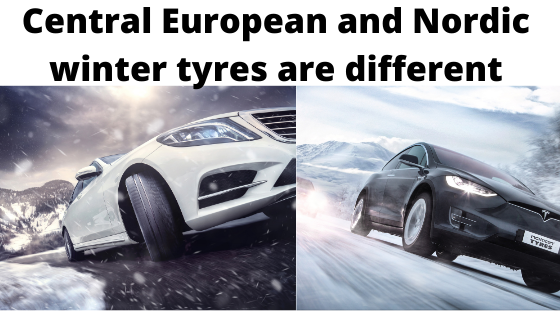For the countries that have real winters and require use of winter tyres to drive safely or due to local legislation and where both options are sold, the debate for which tyre option is the best will continue. Winter tyres should be used to optimize the safety while you drive in winter conditions. The key is to make sure that you purchase premium tyres, that has a rubber compound that is optimized for harsh winter conditions and will remain agile even at very low temperatures. When you choose between studded tyres or non-studded tyres, they should both be of premium quality when you make the choice.
If you make the choice between premium studded tyres and non-studded ones, the difference will not be that big. The main difference is of course that the studded tyres have metal studs that protrude from the tread. In the countries that allow for studded tyres, which are all countries in Europe except Germany and Poland, the use of them is still limited to the winter months that can have harsh conditions. They are often banned for use during the other period of the year. The non-studded tyres have no restrictions and can be used freely in any country in Europe. Even though they should only be used during the winter season, there is no legislation that limit their use during the rest of the year.
Even though the non-studded tyres could be used from a legal point of view, they shouldn’t be used during the warm season. They have a rubber compound that is optimized for low temperatures and a tread that is geared towards ice, snow and slush. When you drive with them in warm weather the wear will be very high and some of the special features in the tread will wear and will decrease their performance later in winter conditions. If you want to have tyres that you can use all-year round there are winter approved all-season tyres that have a dual tread design that can cope with both winter and summer weather with good performance and safety.
Non-studded tyres will rely on its tread and compound to create enough friction as they don’t have studs. They will have gripping particles and silica added to the compound to ensure good grip, they will have innovations in the tread that can create almost the same grip on ice as studded tyres and on snow and slush they will be equally good.
If you live in areas that have very icy winter conditions, then you should consider studded tyres. If you don’t have very icy conditions, you can probably manage with non-studded tyres that can give you more flexibility both in terms of geographical and time restrictions.
If you don’t have that harsh winter, you can even consider some winter approved all-season tires that giving you even more flexibility and convenience. All three options will give you good performance combined with great safety profile while driving.
For more information when it comes to choosing studded or non-studded tyres, visit: https://www.nokiantyres.com/
